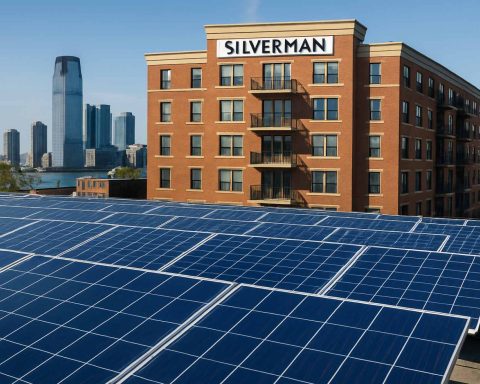- Used electric vehicle (EV) batteries retain 60%–80% of their storage capacity, making them valuable resources rather than waste.
- After road use, EV batteries follow three main paths: direct reuse, repurposing for energy storage, or recycling into raw materials such as lithium, cobalt, nickel, and graphite.
- Global EV demand strains mineral supply chains, with most cobalt and nickel coming from environmentally and ethically sensitive regions.
- Battery recycling and urban mining can significantly reduce reliance on new mining, support sustainability, and stabilize critical material supplies for future EV production.
- Leading companies and supportive policies are accelerating the shift toward closed-loop battery systems, transforming yesterday’s EV batteries into essential resources for tomorrow.
Electric vehicles (EVs) streak silently down highways in ever-growing numbers, a testament to the world’s changing energy appetite. Yet, beneath their floors, piles of spent batteries loom as the next frontier—heralding an unexpected bounty in what many assumed was waste.
Electric vehicle batteries don’t simply die; they evolve. As millions of EVs sold in recent years edge toward retirement, their exhausted power packs still conceal 60% to 80% of their original energy storage. Manufacturers and scientists have begun to unearth startling new chapters for these used batteries, transforming what once seemed depleted into raw material for future technologies—or fuel for the next electric revolution.
Most lithium-ion batteries, engineered for 12 to 15 years of life, often surpass these estimates, sometimes extending their utility by nearly half again as long. When they finally leave the road, their fate diverges down three paths: direct reuse, repurposing in new roles, or—if truly drained—being shredded and refined for essential minerals. Here, blunt machinery grinds batteries into “black mass,” a gritty substance dense with lithium, cobalt, nickel, and graphite. These elements, far from common, sit at the heart of the world’s technological ambitions.
Global stakes are high. Demand for EVs soars, fueled by environmental policies and shifting consumer ideals. In 2024 alone, some 17 million electric and hybrid vehicles joined traffic, a figure on track to surpass 20 million next year. As EVs capture about one-fifth of all auto sales, the mineral supply chain strains under pressure—especially as Tesla, legacy automakers, and startups alike compete for finite resources.
Underneath the surface, lithium and nickel mines in Indonesia, Chile, and the Democratic Republic of Congo feed this surge—a pattern shadowed by environmental concerns, geopolitical tensions, and well-documented human rights challenges. Upwards of 70% of the world’s cobalt is mined in Congo; more than half of its nickel comes from Indonesia. The market, dominated by a handful of players, grows fiercely competitive while exposing dangerous vulnerabilities.
Battery recycling and repurposing offer a strategic lifeline. By 2030, Europe alone could recover up to 25% of its cobalt demand and 16% of its nickel needs from retired batteries and production scrap. This could translate into millions of new EVs built without mining a single new kilogram of ore—slashing environmental harm, sidestepping volatile supply chains, and preserving rare earths for the next wave of innovation.
Early champions of this transformation are emerging. In North America, Li-Cycle—a pioneering company supported by U.S. policy shifts—has established facilities devoted to extracting high-purity metals from dead batteries, accelerating the creation of a closed-loop system where yesterday’s waste becomes tomorrow’s resource. Across the Atlantic, similar efforts—from startup ventures in the United Kingdom to sweeping European initiatives—signal an industry pivoting from extraction to regeneration.
The stakes transcend economics. By investing decisively in advanced battery recycling—and forging policies that demand “urban mining” from existing devices—nations stand to loosen the grip of unstable mining sectors, promote environmental justice, and inject resilience into the heart of the clean energy transition.
The lesson is clear: Instead of discarding the next wave of used EV batteries, treat them as treasure chests of critical minerals. This circular vision not only defends ecosystems and workers, but also promises rapid, responsible growth for everyone embracing electrification.
As EVs continue their steady global march, the ghosts of old batteries may light the path not just for transportation, but for a new era of renewable resource stewardship—where nothing truly goes to waste, and even exhaustion can signal a fresh start. To learn more about how battery technology is shaping the future, visit Tesla or explore global technology news on Reuters.
Dead EV Batteries Are the New Gold Rush: What You Need to Know Before the Recycling Boom Explodes
# The Untapped Potential of Used Electric Vehicle Batteries
Electric vehicle (EV) adoption is accelerating, but the conversation is quickly shifting to what happens when those batteries reach the end of their road use. Underlying the green revolution is a high-stakes scramble to master EV battery recycling and repurposing—an arena filled with opportunities, risks, breakthroughs, and controversy. Here’s a deeper dive into what lies beneath the EV battery lifecycle and why it’s shaping the future of mobility, clean energy, and critical resource management.
—
Frequently Asked Questions About Used EV Batteries
What Happens to EV Batteries After Their First Life?
– Direct Reuse: Some batteries are still robust enough to power less demanding vehicles or equipment.
– Repurposing: Many enter “second-life” applications, notably as stationary energy storage (for homes or power grids), extending their usefulness for another 5–10 years.
– Recycling: If no longer viable, they are shredded and processed to recover metals like lithium, cobalt, and nickel.
How Much Value Remains in ‘Dead’ EV Batteries?
– Even after retiring from vehicular use, these batteries typically retain 60–80% of their original storage capacity, making them valuable for multiple purposes.
—
Real-World Use Cases: Second Life Battery Projects
– Grid Storage: Companies like Nissan and BMW repurpose EV packs for utility-scale storage, allowing renewable energy (such as solar or wind) to power homes even after sunset.
– Off-Grid Solutions: Retired EV batteries help deliver electricity in remote areas lacking stable grids, addressing energy poverty.
– Commercial Buildings: Some tech companies and shopping centers install used EV batteries for backup and peak-load management.
—
Industry Trends & Market Forecast
– Rapid Growth: Global EV sales are expected to reach 20 million in 2025, per International Energy Agency projections.
– Recycling Market Surge: The global battery recycling market, valued at ~$17 billion in 2022, is forecasted to reach $44 billion by 2030 (MarketsandMarkets).
– Legislation Boosts Recycling: The EU Battery Directive and U.S. Inflation Reduction Act include provisions that demand recycling and domestically sourced materials, further driving investment.
—
How-To Steps: Recycling a Spent EV Battery
1. Collection: End-of-life EVs are sent to dismantling centers.
2. Disassembly & Diagnostics: Batteries are removed and assessed for reuse, repurposing, or recycling.
3. Safe Transportation: Batteries are transported to recycling facilities in compliance with strict safety and hazard regulations.
4. Processing: Advanced methods such as hydrometallurgy or pyrometallurgy extract valuable metals from battery “black mass.”
5. Purification: The raw materials are refined and reintroduced into battery supply chains.
—
Battery Recycling Technology: Comparing the Leaders
– Li-Cycle (North America): Specializes in flexible, modular recycling plants that recover 95%+ of metals with low emissions.
– Redwood Materials (USA): Founded by Tesla co-founder JB Straubel; known for its closed-loop recycling and partnerships with automakers.
– Umicore (Europe): Operates large-scale plants and focuses on sustainable refining methods with minimal environmental footprint.
—
The Pros and Cons of Battery Recycling
Pros
– Environmental Impact: Reduces mining, waste, and emissions.
– Resource Security: Lessens reliance on unstable regions and fragile supply lines.
– Economic Opportunity: Creates jobs and new business models in recycling and energy storage.
Cons
– Technical Barriers: Complex battery chemistries and designs slow processing.
– Safety Risks: Handling/transport of lithium-ion batteries poses fire and explosion hazards.
– Cost: Current processes may be more expensive than raw material extraction, though scale and innovation are reducing this gap.
—
Controversies & Limitations
– Child Labor & Human Rights: Despite recycling advances, most cobalt still comes from the DRC, where exploitation is rampant ([Amnesty International](https://www.amnesty.org)).
– Recycling Efficiency: Not all recycling methods can fully recover lithium, and plastic and electrolyte components are often disposed of.
– Carbon Footprint: Some processes, especially pyrometallurgy, generate significant emissions, offsetting some ecological gains.
—
Features, Specs & Pricing: What to Watch For
– Recycling Yields: Advanced plants can recover >90% of nickel, cobalt, and copper; lithium recovery is improving but still lags (~60–80%).
– Battery Swap Economics: A used EV battery for home storage may cost 60–75% less than a new one, according to BloombergNEF.
– Environmental Certifications: Look for recyclers following ISO 14001 or similar standards for greener operations.
—
Security & Sustainability Insights
– Urban Mining: Experts urge “urban mining”—tapping electronics, phones, and EVs for secondary resources—to stabilize supplies and improve national security (World Economic Forum).
– Policy Trends: Countries like Germany, China, and South Korea mandate recycling quotas for manufacturers, targeting a circular supply chain by 2035.
—
Quick Tips & Actionable Recommendations
1. If you drive an EV: Ask your dealer about battery take-back and recycling programs at purchase or lease end.
2. For renewable energy adopters: Investigate second-life EV battery storage as a sustainable, cost-saving option for your solar setup.
3. Advocate smart policy: Support extended producer responsibility and right-to-repair laws to encourage more circular battery solutions.
4. Stay up-to-date: Follow trusted sources like Tesla and Reuters to learn about new breakthroughs, pilot projects, and legislation.
5. Compare recycling firms: If you run a fleet or operate in the energy sector, compare solutions by market leaders, assessing recovery rates, transparency, and eco-credentials.
—
Final Takeaway
The next great leap in clean tech isn’t just making electric vehicles, but unlocking the latent value in every retired battery. Properly managed, old EV batteries become not waste, but a renewable resource that powers a sustainable and ethical future for all.
For more in-depth updates and expert analysis, explore Tesla and Reuters.










